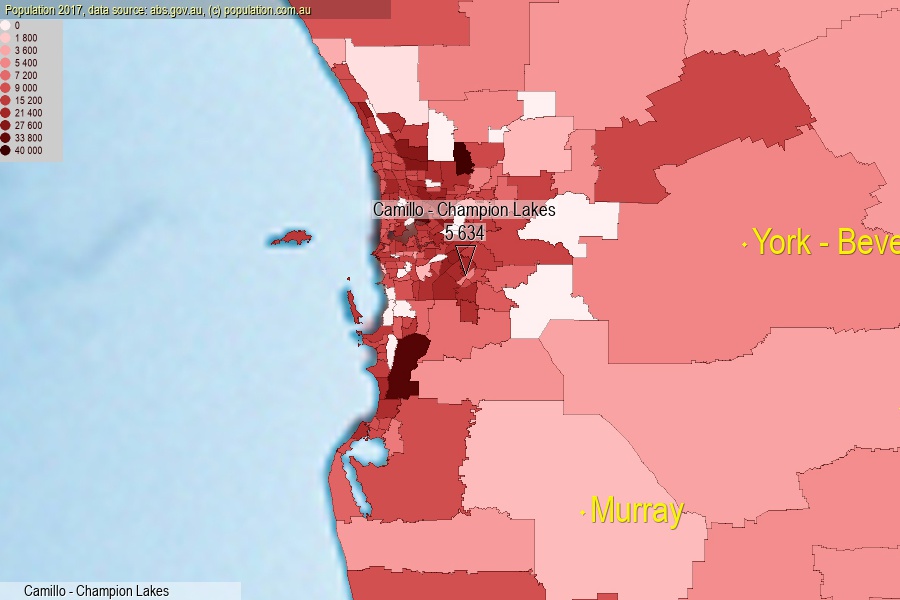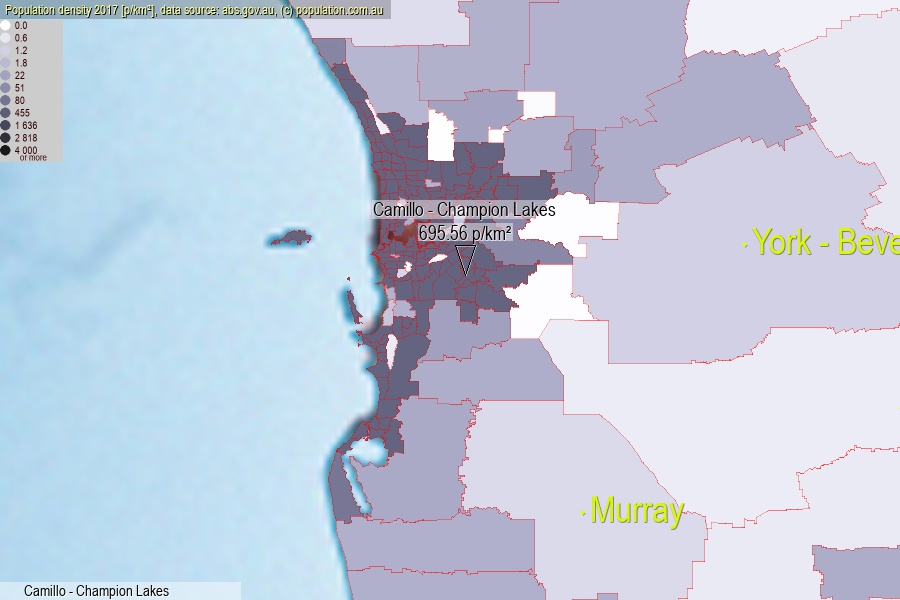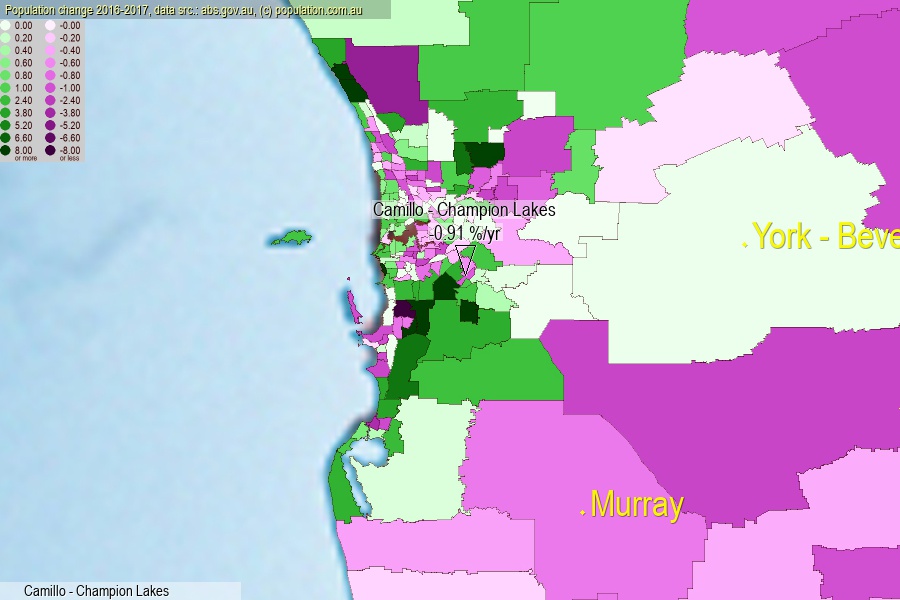 population.com.au
population.com.auLast official estimated population of Camillo - Champion Lakes (as Statistical Area Level 2) was 5 634 people (on 2017-06-30)[2]. This was 0.02% of total Australian population and 0.217% of WA population. Area of Camillo - Champion Lakes is 8.10 km², in this year population density was 695.56 p/km² . If population growth rate would be same as in period 2016-2017 (-0.91%/yr), Camillo - Champion Lakes population in 2025 would be 5 235. [0]



Click to enlarge. Camillo - Champion Lakes is located in the center of the images.
Population [people], population density [p./km²] and population change [%/year] [2]
View borders » (new window) [4]
[1991-1992] +0.16 %/Yr.
[1992-1993] -0.23 %/Yr.
[1993-1994] -0.44 %/Yr.
[1994-1995] -2.76 %/Yr.
[1995-1996] -1.17 %/Yr.
[1996-1997] -1.06 %/Yr.
[1997-1998] -0.77 %/Yr.
[1998-1999] -1.46 %/Yr.
[1999-2000] -1.27 %/Yr.
[2000-2001] -1.04 %/Yr.
[2001-2002] -1.54 %/Yr.
[2002-2003] -1.67 %/Yr.
[2003-2004] -0.90 %/Yr.
[2004-2005] -1.62 %/Yr.
[2005-2006] -1.17 %/Yr.
[2006-2007] -0.19 %/Yr.
[2007-2008] +0.71 %/Yr.
[2008-2009] +0.80 %/Yr.
[2009-2010] +1.49 %/Yr.
[2010-2011] +2.70 %/Yr.
[2011-2012] +1.40 %/Yr.
[2012-2013] +1.09 %/Yr.
[2013-2014] +0.58 %/Yr.
[2014-2015] +0.19 %/Yr.
[2015-2016] -0.12 %/Yr.
[2016-2017] -0.91 %/Yr.
[0] Calculated with linear interpolation from officially estimated population
[1] Read more about SA2 and Australian Statistical Geography Standard (ASGS) on abs.gov.au
[2] Population data from Australian Bureau of Statistics (Population and density: 2017; change: 2016-2017)
[3] Digital Boundaries: Australian Statistical Geography Standard (ASGS) 2016.
[4] Border coordinates are simplifyed using Ramer-Douglas-Peucker algorithm.